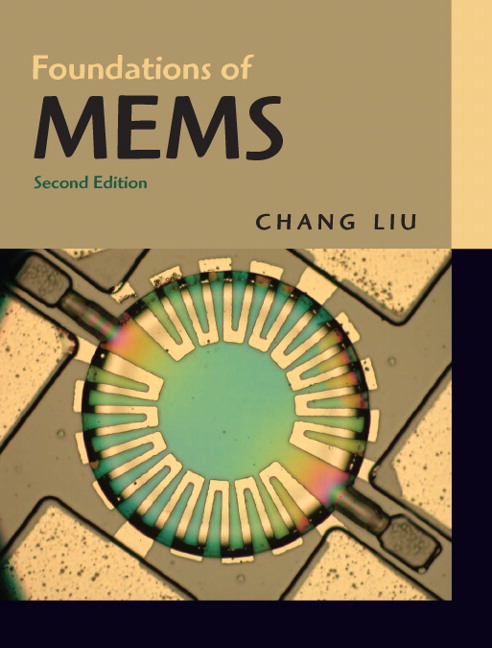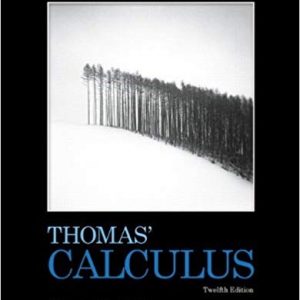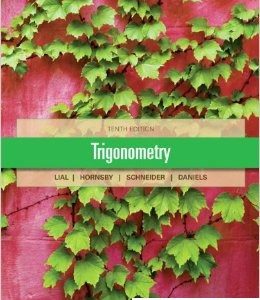This is completed downloadable of Solution Manual for Foundations of MEMS, 2/E 2nd Edition Chang Liu digital download immediately after payment is complete.

Product details:
- ISBN-10 : 0132497360
- ISBN-13 : 978-0132497367
- Author: Chang Liu
Foundations of MEMS is an entry-level text designed to systematically teach the specifics of MEMS to an interdisciplinary audience. Liu discusses designs, materials, and fabrication issues related to the MEMS field by employing concepts from both the electrical and mechanical engineering domains and by incorporating evolving microfabrication technology ― all in a time-efficient and methodical manner. A wealth of examples and problems solidify students’ understanding of abstract concepts and provide ample opportunities for practicing critical thinking.
Table of contents:
1.1.1 From the Beginning to 1990……Page 16
1.1.2 From 1990 to 2001……Page 20
1.1.3 2002 to Present……Page 26
1.1.4 Future Trends……Page 27
1.2.1 Miniaturization……Page 28
1.2.3 Parallel Fabrication with Precision……Page 30
1.3.1 Energy Domains and Transducers……Page 31
1.3.2 Sensors Considerations……Page 33
1.3.3 Sensor Noise and Design Complexity……Page 35
1.3.4 Actuators Considerations……Page 36
Summary……Page 37
Problems……Page 38
References……Page 42
2.1 Overview of Microfabrication……Page 48
2.2.1 Photolithography……Page 52
2.2.2 Thin Film Deposition……Page 55
2.2.4 Wet Etching……Page 56
2.2.6 Plasma Etching and Reactive Ion Etching……Page 58
2.2.7 Doping……Page 59
2.2.8 Wafer Dicing……Page 60
2.2.9 Wafer Bonding……Page 61
2.3 The Microelectronics Fabrication Process Flow……Page 62
2.4 Silicon-Based MEMS Processes……Page 64
2.5.1 Integration Options……Page 70
2.6 New Materials and Fabrication Processes……Page 72
2.7.2 Points of Consideration for Etching Processes……Page 74
2.7.4 Rules for Building a Robust Process……Page 76
Problems……Page 78
References……Page 80
3.0 Preview……Page 85
3.1.1 Semiconductor Materials……Page 86
3.1.2 Calculation of Charge Carrier Concentration……Page 87
3.1.3 Conductivity and Resistivity……Page 90
3.2 Crystal Planes and Orientations……Page 94
3.3.1 Internal Force Analysis: Newton’s Laws of Motion……Page 97
3.3.2 Definitions of Stress and Strain……Page 99
3.3.3 General Scalar Relation Between Tensile Stress and Strain……Page 102
3.3.4 Mechanical Properties of Silicon and Related Thin Films……Page 104
3.3.5 General Stress—Strain Relations……Page 106
3.4 Flexural Beam Bending Analysis Under Simple Loading Conditions……Page 108
3.4.1 Types of Beams……Page 109
3.4.2 Longitudinal Strain Under Pure Bending……Page 111
3.4.3 Deflection of Beams……Page 113
3.4.4 Finding the Spring Constants……Page 114
3.5 Torsional Deflections……Page 119
3.6 Intrinsic Stress……Page 121
3.7.1 Dynamic System and Governing Equation……Page 126
3.7.2 Response Under Sinusoidal Resonant Input……Page 127
3.7.4 Resonant Frequency and Bandwidth……Page 129
3.8 Active Tuning of Spring Constant and Resonant Frequency……Page 130
3.9 A List of Suggested Courses and Books……Page 131
Summary……Page 132
Problems……Page 133
References……Page 137
4.1 Introduction to Electrostatic Sensors and Actuators……Page 142
4.2.1 Capacitance of Parallel Plates……Page 144
4.2.2 Equilibrium Position of Electrostatic Actuator under Bias……Page 147
4.2.3 Pull-in Effect of Parallel-Plate Actuators……Page 150
4.3 Applications of Parallel-Plate Capacitors……Page 155
4.3.1 Inertia Sensor……Page 156
4.3.2 Pressure Sensor……Page 161
4.3.3 Flow Sensor……Page 166
4.3.4 Tactile Sensor……Page 169
4.3.5 Parallel-Plate Actuators……Page 171
4.4 Interdigitated Finger Capacitors……Page 172
4.5.1 Inertia Sensors……Page 177
4.5.2 Actuators……Page 181
Problems……Page 183
References……Page 187
5.1.1 Thermal Sensors……Page 191
5.1.3 Fundamentals of Thermal Transfer……Page 192
5.2 Sensors and Actuators Based on Thermal Expansion……Page 197
5.2.1 Thermal Bimorph Principle……Page 199
5.2.2 Thermal Actuators with a Single Material……Page 206
5.3 Thermal Couples……Page 208
5.4 Thermal Resistors……Page 211
5.5 Applications……Page 213
5.5.1 Inertia Sensors……Page 214
5.5.2 Flow Sensors……Page 216
5.5.3 Infrared Sensors……Page 229
5.5.4 Other Sensors……Page 232
Problems……Page 237
References……Page 242
6.1 Origin and Expression of Piezoresistivity……Page 246
6.2.1 Metal Strain Gauges……Page 249
6.2.2 Single Crystal Silicon……Page 250
6.3.1 Stress in Flexural Cantilevers……Page 253
6.3.2 Stress and Deformation in Membrane……Page 259
6.4.1 Inertial Sensors……Page 261
6.4.2 Pressure Sensors……Page 267
6.4.3 Tactile Sensor……Page 269
6.4.4 Flow Sensor……Page 272
Summary……Page 277
Problems……Page 278
References……Page 282
7.1.1 Background……Page 284
7.1.2 Mathematical Description of Piezoelectric Effects……Page 286
7.1.3 Cantilever Piezoelectric Actuator Model……Page 288
7.2.1 Quartz……Page 291
7.2.2 PZT……Page 293
7.2.3 PVDF……Page 294
7.2.4 ZnO……Page 295
7.2.5 Other Materials……Page 299
7.3.1 Inertia Sensors……Page 300
7.3.2 Acoustic Sensors……Page 304
7.3.3 Tactile Sensors……Page 307
7.3.4 Flow Sensors……Page 308
7.3.5 Surface Elastic Waves……Page 310
Problems……Page 312
References……Page 316
8.1.1 Magnetization and Nomenclatures……Page 318
8.1.3 Selected Principles of Micro Magnetic Actuators……Page 322
8.2.1 Deposition of Magnetic Materials……Page 327
8.2.2 Design and Fabrication of Magnetic Coil……Page 329
8.3 Case Studies of MEMS Magnetic Actuators……Page 332
Problems……Page 343
References……Page 345
9.1 Comparison of Major Sensing and Actuation Methods……Page 347
9.2.1 Tunneling Sensing……Page 349
9.2.3 Optical Sensing……Page 351
9.2.4 Field Effect Transistors……Page 357
9.2.5 Radio Frequency Resonance Sensing……Page 360
Summary……Page 361
Problems……Page 362
References……Page 363
10.1 Introduction……Page 366
10.2.2 Rules of Anisotropic Etching—Simplest Case……Page 368
10.2.3 Rules of Anisotropic Etching—Complex Structures……Page 374
10.2.5 Interaction of Etching Profiles from Isolated Patterns……Page 382
10.2.6 Summary of Design Methodology……Page 384
10.2.7 Chemicals for Wet Anisotropic Etching……Page 386
10.3 Dry Etching and Deep Reactive Ion Etching……Page 391
10.5 Gas Phase Etchants……Page 392
10.6 Native Oxide……Page 393
Summary……Page 394
Problems……Page 395
References……Page 401
11.1.1 Sacrificial Etching Process……Page 404
11.1.2 Micro Motor Fabrication Process—A First Pass……Page 405
11.2.3 Micro Motor Fabrication Process—A Second Pass……Page 406
11.1.4 Micro Motor Fabrication Process—Third Pass……Page 407
11.2.1 Material Selection Criteria for a Two-layer Process……Page 410
11.2.2 Thin Films by Low Pressure Chemical Vapor Deposition……Page 411
11.2.3 Other Surface Micromachining Materials and Processes……Page 414
11.3 Acceleration of Sacrificial Etch……Page 415
11.4 Stiction and Anti-stiction Methods……Page 417
Summary……Page 418
Problems……Page 419
References……Page 421
12.0 Preview……Page 425
12.1 Process for Suspension Beams……Page 427
12.2 Process for Membranes……Page 433
12.3.1 SPM Technologies Case Motivation……Page 438
12.3.2 General Fabrication Methods for Tips……Page 440
12.3.3 Cantilevers with Integrated Tips……Page 442
12.3.4 Cantilevers with Integrated Sensors……Page 447
12.3.5 SPM Probes with Actuators……Page 453
12.4 Practical Factors Affecting Yield of MEMS……Page 458
Problems……Page 459
References……Page 463
13.1 Introduction……Page 466
13.2 Polymers in MEMS……Page 468
13.2.2 SU-8……Page 470
13.2.3 Liquid Crystal Polymer (LCP)……Page 471
13.2.4 PDMS……Page 472
13.2.6 Parylene……Page 474
13.2.8 Other Polymers……Page 475
13.3.1 Acceleration Sensors……Page 476
13.3.2 Pressure Sensors……Page 478
13.3.3 Flow Sensors……Page 482
13.3.4 Tactile Sensors……Page 484
Problems……Page 487
References……Page 488
14.1 Motivation for Microfluidics……Page 492
14.2 Essential Biology Concepts……Page 493
14.3.1 The Reynolds Number and Viscosity……Page 496
14.3.3 Pressure Driven Flow……Page 498
14.3.4 Electrokinetic Flow……Page 501
14.3.5 Electrophoresis and Dielectrophoresis……Page 502
14.4.1 Channels……Page 504
14.4.2 Valves……Page 516
Problems……Page 519
References……Page 521
15.0 Preview……Page 526
15.1.1 Background and History……Page 527
15.1.2 Device Design Considerations……Page 528
15.1.3 Commercial Case: NovaSensor BP Sensor……Page 529
15.2.1 Background and History……Page 531
15.2.2 Design Considerations……Page 532
15.2.3 Commercial Case: Knowles Microphone……Page 533
15.3.2 Design Considerations……Page 534
15.3.3 Commercial Case: Analog Devices and MEMSIC……Page 538
15.4.2 The Coriolis Force……Page 539
15.4.3 MEMS Gyro Design……Page 541
15.4.4 Single Axis Gyro Dynamics……Page 543
15.4.5 Commercial Case: InvenSense Gyro……Page 545
15.5 Summary of Top Concerns for MEMS Product Development……Page 546
15.5.2 Repeatability and Reliability……Page 547
15.5.4 Market Uncertainties, Investment, and Competition……Page 548
Problems……Page 549
References……Page 553
Appendix 1 Characteristics of Selected MEMS Materials……Page 554
Appendix 2 Frequently Used Formula for Beams, Cantilevers, and Plates……Page 557
Appendix 3 Basic Tools for Dealing with a Mechanical Second-order Dynamic System……Page 559
Appendix 4 Most Commonly Encountered Materials……Page 563
Appendix 5 Most Commonly Encountered Material Removal Process Steps……Page 564
Appendix 6 A List of General Compatibility between General Materials and Processes……Page 565
Appendix 7 Comparison of Commercial Inertial Sensors……Page 568
Answers to Selected Problems……Page 570
People also search:
foundations of mems 2nd edition pdf
foundations of mems





